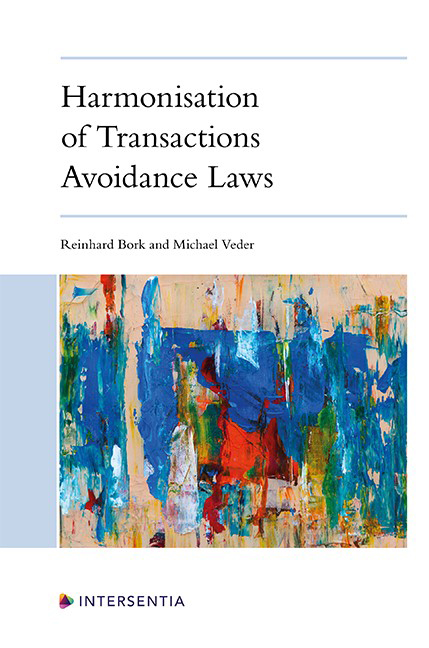France
Published online by Cambridge University Press: 26 May 2022
Summary
A. INSOLVENCY LAW OF FRANCE
The provisions regarding the avoidance of transactions are set out in Art. L. 632-1 to L. 632-4 of the French Commercial Code which are applicable in French insolvency proceedings, i.e. redressement judiciaire and liquidation judiciaire proceedings (“Proceedings”). Except as stated otherwise herein, Articles refer to the French Commercial Code.
B. SCOPE
Art. L. 632-1 provides for a limited number of legal acts being automatically (de plein droit) voidable, provided that (i) these acts were perfected during the suspect period, i.e. from the date of the actual cessation of payment of the debtor until the date of the judgement of the court (“Court “) opening insolvency proceedings; and (ii) the Insolvency Practitioner files a voidance action before the court.
Art. L. 632-1 is construed as an exceptional rule being interpreted restrictively, setting out a list of voidable legal acts. Hence, French law does not provide for any general principle with respect to the automatic avoidance of transactions (“nullité de plein droit “).
Art. L. 632-2 sets out a special “optional” voidance regime pursuant to which payments and legal acts entered into for valuable consideration (àtitre onéreux), including transactions with congruent coverage, can be voided by the court provided that the creditor (co-contractor) knew at the time of the payment or of the legal act in question that the debtor was in a situation of cessation of payment.
The architecture of the Model Law is construed quite differently, as shown in the following nine points below:
1. The Model Law provides for a rule on general prerequisites, together with special provisions for avoidance of acts based on preference, with limited exceptions, and voidance of transactions that are effectuated at undervalue or which are intentionally disadvantaging the general body of creditors.
2. The Model Law takes into consideration the special situation where parties are closely related to the debtor.
3. The Model Law does not retain the summa divisio distinction between automatic avoidance and optional voidance based on the actual knowledge of the creditor/co-contractor of the actual insolvency of the debtor.
4. The Model Law does not list specific legal acts but rather differentiates various voidance regimes based on preference, transactions at an undervalue, and transactions that are intentionally disadvantaging the general body of creditors.
- Type
- Chapter
- Information
- Harmonisation of Transactions Avoidance Laws , pp. 381 - 392Publisher: IntersentiaPrint publication year: 2022



